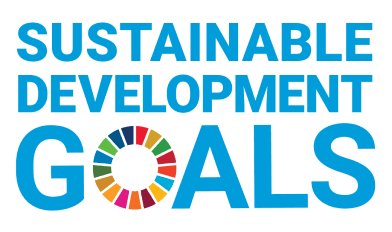Technology plays a transformative role in addressing some of the world’s most pressing challenges. In 2015, the United Nations launched the Sustainable Development Goals (SDGs), a set of 17 global objectives aimed at ending poverty, protecting the planet, and ensuring prosperity for all by 2030. As of 2025, technology remains a central driver in accelerating progress toward these goals across various sectors, from education and healthcare to environmental protection and economic growth.
The integration of digital innovation with development strategies is not just a luxury—it is an essential catalyst for meaningful change and measurable impact in both developed and developing regions of the world.
Enhancing Access to Quality Education
Technology has reshaped the educational landscape by making learning more accessible and inclusive. In regions with limited infrastructure, online learning platforms and mobile applications provide educational content to remote and underserved communities.
Some key impacts include:
- E-learning platforms like Coursera, Khan Academy, and national portals offer free or low-cost courses to learners globally.
- Mobile-based literacy apps help improve reading and writing skills in rural and low-income communities.
- AI-powered personalized learning tools adapt educational content to match each student’s pace and learning style.
This increased access to learning supports SDG 4, which focuses on quality education for all, and helps close the educational gap between urban and rural populations.
Promoting Good Health and Well-Being
Digital technologies in the health sector are saving lives, especially in regions where medical resources are limited. Mobile health (mHealth) apps, telemedicine services, and data analytics tools are changing the way health services are delivered and monitored.
Technology supports SDG 3 on health and well-being by:
- Telehealth platforms connecting patients with doctors across distances, improving access to healthcare in rural areas.
- AI diagnostics helping detect diseases early through imaging and symptom analysis.
- Wearable devices enabling individuals to track their health metrics such as heart rate, blood pressure, and sleep cycles.
- Public health data analysis improving response to epidemics and tracking vaccination efforts in real time.
These innovations make healthcare more proactive, affordable, and responsive.
Supporting Clean Energy Transitions
Advancements in energy technology are driving global efforts toward SDG 7, which advocates for affordable and clean energy. Solar, wind, and battery storage technologies are being enhanced through digital tools like IoT and smart grids.
Notable contributions include:
- Smart meters that track energy usage in real time, promoting energy efficiency and cost savings.
- Renewable energy forecasting systems that use AI to predict solar and wind output.
- Decentralized power solutions such as solar microgrids providing electricity to off-grid villages in Africa and Asia.
By making clean energy more scalable and accessible, technology is helping reduce reliance on fossil fuels and cut greenhouse gas emissions.
Fostering Economic Growth and Decent Work
Technology fosters economic growth by creating new industries, improving productivity, and opening up job opportunities. Through digital platforms, small businesses can reach global markets, and workers can access flexible employment.
Technology supports SDG 8 by:
- Freelancing platforms like Upwork and Fiverr offering income opportunities to skilled workers worldwide.
- E-commerce tools enabling small enterprises to sell goods without needing a physical store.
- Digital financial services such as mobile banking and e-wallets promoting financial inclusion for the unbanked.
- Job matching apps connecting workers with employment opportunities, especially in developing regions.
These tools help reduce unemployment, bridge economic inequality, and support entrepreneurship.
Improving Gender Equality
Technology contributes to gender equality (SDG 5) by creating platforms where women and marginalized communities can voice their concerns, access resources, and build networks for empowerment.
Key contributions include:
- Online learning platforms that help women acquire new skills for the digital economy.
- Social media and digital advocacy campaigns raising awareness of gender-based issues.
- Mobile health and reproductive apps providing women with critical information about their bodies and rights.
- Virtual mentorship programs that connect women professionals with industry leaders.
Through greater access to education, finance, and health services, technology empowers women to participate fully in society and the economy.
Driving Innovation in Sustainable Agriculture
Agricultural technology plays a significant role in achieving SDG 2 (zero hunger) and SDG 12 (responsible consumption and production). Farmers worldwide are now using digital tools to improve yield, reduce waste, and manage resources more efficiently.
Examples of technological support in agriculture include:
- Precision farming tools that use sensors and drones to monitor soil health and crop conditions.
- Agricultural forecasting apps that provide weather updates and planting advice.
- Mobile trading platforms connecting farmers directly with buyers and markets.
- Supply chain tracking systems reducing food spoilage and ensuring sustainability.
These tools enhance food security, increase income for smallholder farmers, and reduce environmental impact.
Monitoring Climate Action and Environmental Protection
Technology also supports SDG 13 (climate action), SDG 14 (life below water), and SDG 15 (life on land) by offering tools for monitoring, research, and sustainable management of ecosystems.
Digital tools and innovations in environmental conservation include:
- Satellite imaging for tracking deforestation, desertification, and natural disasters.
- IoT-enabled sensors for monitoring air and water quality in real time.
- Blockchain technology for transparent carbon credit tracking and environmental funding.
- Mobile apps that encourage eco-friendly behavior such as recycling, carpooling, and tree planting.
By making environmental data accessible and actionable, these technologies encourage both individuals and governments to adopt sustainable practices.
Strengthening Institutions and Global Partnerships
Technology fosters global cooperation and transparent institutions, which are central to SDG 16 and SDG 17. Digital platforms promote accountability, improve governance, and facilitate international partnerships for sustainable development.
Applications in governance and global partnerships include:
- E-governance platforms making public services more transparent and accessible.
- Blockchain solutions ensuring accountability in aid distribution and public funds.
- Data-sharing platforms enabling collaboration between international organizations and research institutions.
- Crowdsourcing and citizen engagement tools involving the public in policymaking and monitoring.
Such innovations strengthen democracy, trust, and international cooperation—crucial for building peaceful and inclusive societies.
Conclusion
Technology is not a silver bullet, but it is a powerful enabler of progress when aligned with inclusive, sustainable policies and human-centered design. From education and healthcare to agriculture and governance, digital tools are accelerating global efforts to achieve the Sustainable Development Goals by 2030.
As of 2025, the challenge is not just to develop advanced technologies but to ensure they are equitably distributed and responsibly implemented. When used wisely, technology becomes a bridge—not a barrier—to a better, more sustainable world for all.



